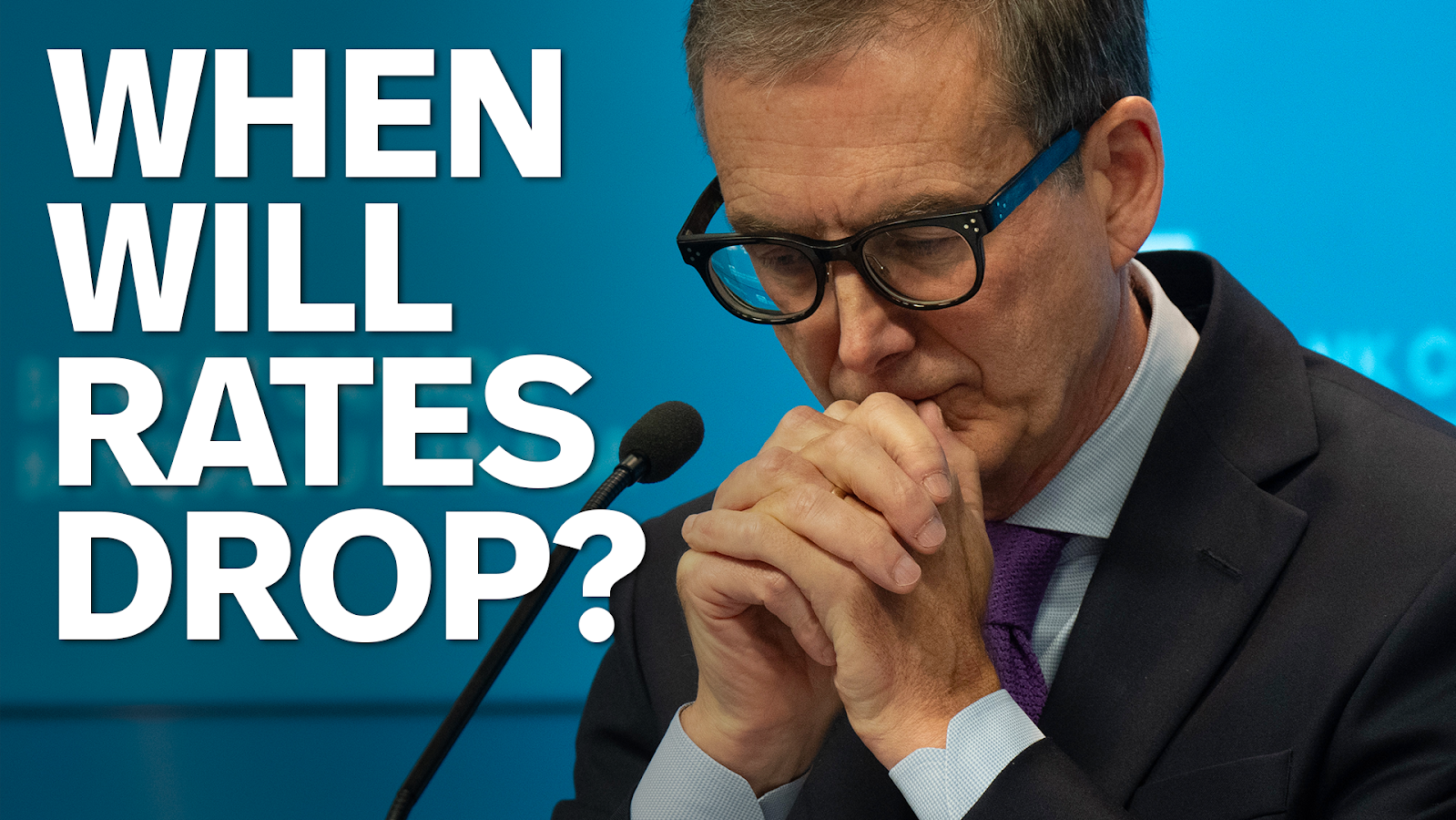Americans consumers — and politicians — have been in a spending mood.

In a lot of ways, the U.S. and Canadian economies are similar. They’re both seeing progress in the fight to rein in inflation. They both have robust employment levels.
But the American economy is growing by 4.9 per cent, while ours has been flat.
Economists warn the numbers aren’t even capturing the full extent of the differences.
“Things are actually worse than the data would suggest,” said Royce Mendes, managing director at Desjardins Capital Markets.
He says explosive population growth has inflated economic growth in Canada. Without that, the economy would be decidedly worse than it is right now.
So, why are the Canadian and U.S. economies performing so differently?
Two key factors are driving that. One is Canadian, one is American. One is well-known, the other caught almost everyone by surprise.
The first is simple. Higher interest rates are having a disproportionately harsher impact in Canada than in the U.S.

Why aren’t interest rates going down in Canada? | About That
CBC’s Andrew Chang looks at the Bank of Canada’s latest move to hold its key interest rate. Why haven’t rates dropped? And how does it impact your mortgage, loans and cost of living?
Canadians have higher debt loads. Those debt loads renew more quickly in Canada. That means higher borrowing costs bite harder, faster here.
Most Americans have a 30-year mortgage, so rising rates don’t have as big an impact as they do in Canada, where the average mortgage comes with a five-year term.
Americans spending more, saving less
Millions of Canadian households are bracing for their renewal in the next couple of years, so they’re spending less and saving more. In the United States, households are spending more and saving less.
“The U.S. is unique insofar as Americans are actually spending down their excess savings,” Royce said. “Canadians are continuing to sit on that pile of savings because they know what’s going to happen when their mortgage comes up for renewal.”
As a result, one economy is chugging along, while the other has stagnated. Canada’s GDP has been in neutral for seven months.

But the way high interest rates are shaping behaviour doesn’t totally explain the disparity between the two economies, says Bank of Montreal chief economist Douglas Porter.
He says the U.S. government has been on a spending spree, introducing programs like the Bipartisan Infrastructure Deal, the CHIPS and Science Act and the climate-focused Inflation Reduction Act.
The first rolled out billions of dollars in spending to address decades of backlog in federal infrastructure, while the CHIPS act provides billions of dollars in incentives to the American semiconductor industry.
They’re all desperately needed. But they also amount to trillions of dollars in new spending.
“I would call it a sugar rush,” said Porter. “Just a wave of fiscal spending from the U.S. which has actually led to the U.S. economy doing better this year than it did last year.”
National accounts data in both Canada and the U.S. was released at the end of October.
The figures showed Canada’s budgetary picture was improving. The deficit shrank slightly, to around $35 billion, or a little more than one per cent of GDP.
‘Fiscal strength will wear off in the U.S.’
In the U.S., a very different picture emerged. Joe Biden’s administration posted a $1.695 trillion US budget deficit in fiscal 2023, a 23 per cent jump from the previous year.
All that spending is helping to keep economic growth numbers higher than they would normally have been. Porter says that sugar rush isn’t going to last.
“This fiscal strength will wear off in the U.S.” he said. “It’s actually going to become a bit of a drag over the next year, instead of adding to growth.”
He says the Biden administration introduced those budget initiatives in the hopes that the benefits of the fiscal spending would still be sloshing around the economy when Americans go to the polls in 2024.
But many forecasts show the U.S. economy could start to see a slowdown as early as the fourth quarter of this year.
“They probably peaked too soon on that front,” said Porter.
The diverging economic scenarios highlight the benefits and challenges to central banks on both sides of the border.
The burst of GDP in the U.S. has some wondering if the Federal Reserve will have to hold off on rate cuts, as it may make inflation even stickier than it already is.
In Canada, some expect rate cuts will come sooner. Desjardins’s forecast now shows the Bank of Canada cutting rates in the second half of next year, with the rate at 3.5 per cent by the end of 2024 and all the way down to 2.5 per cent the following year.
Start rowing in the same direction
Last week, Bank of Canada governor Tiff Macklem warned about the perils of government spending that could boost economic growth but also slow progress in the fight against inflation.
“It’s going to be easier to get inflation down if monetary and fiscal policy are rowing in the same direction,” Macklem told reporters.

Meanwhile, Jerome Powell, chair of the U.S. Federal Reserve, heralded the positive direction of the American economy as all that fiscal spending kicks in.
“Inflation has moderated since the middle of last year. Readings over the summer were quite favourable. But a few months of good data are only the beginning of what it will take to build confidence that inflation is moving down sustainably toward our goal,” Powell said after the Fed announced it would leave rates unchanged.
But the divergence highlights political challenges.
The American economy is posting big gains now, but will likely slow as the presidential election season heats up over the next year.
The Canadian economy is flirting with a recession now, but is widely expected to pick up next year — perhaps in time for a federal election that could fall in 2025.
ABOUT THE AUTHOR
Senior Business reporter for CBC News. A former host of On the Money and World Report on CBC Radio, Peter Armstrong has been a foreign correspondent and parliamentary reporter for CBC. Subscribe to Peter’s newsletter here: cbc.ca/mindyourbusiness Twitter: @armstrongcbc
*****
Credit belongs to : www.cbc.ca
 Atin Ito First Filipino Community Newspaper in Ontario
Atin Ito First Filipino Community Newspaper in Ontario






